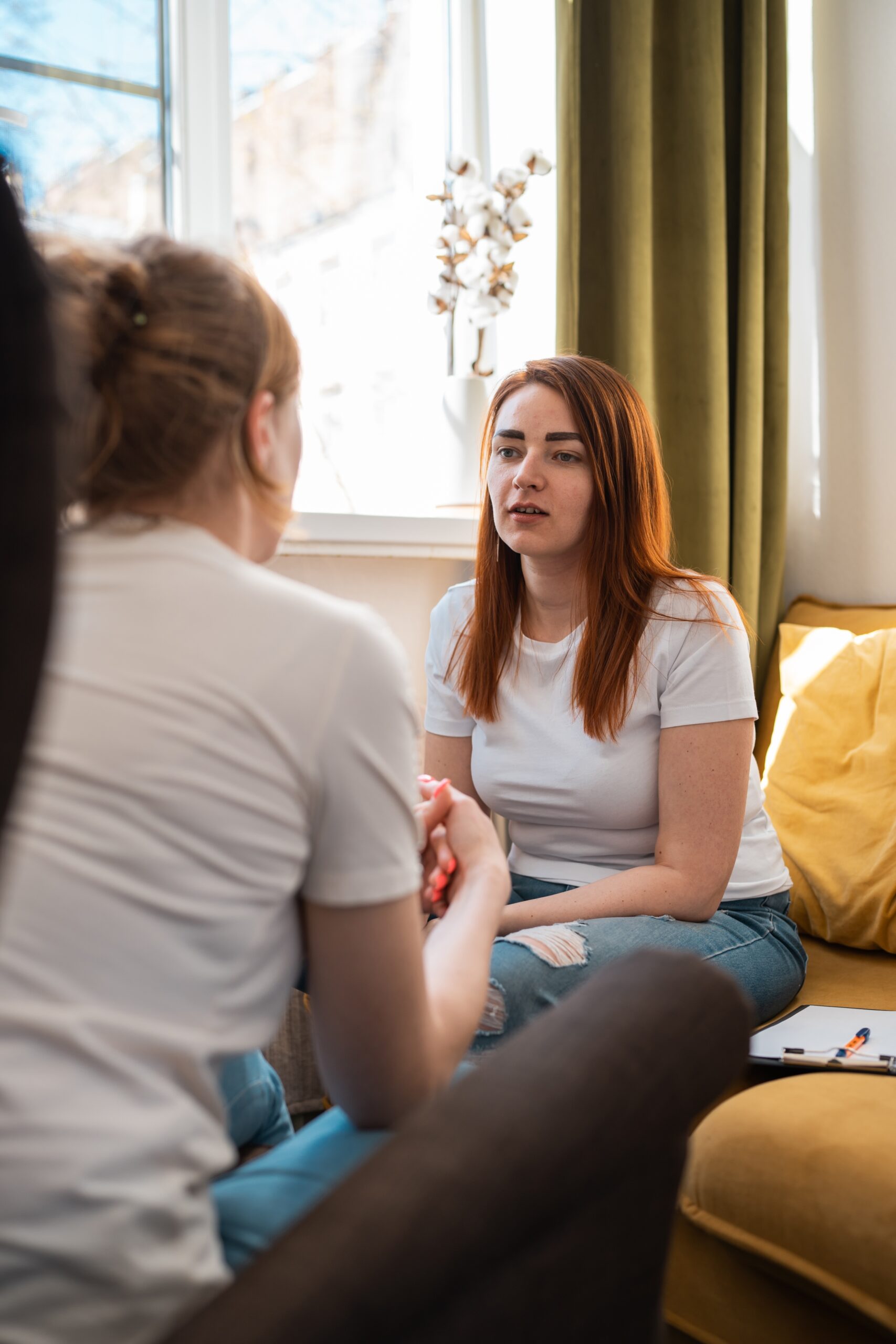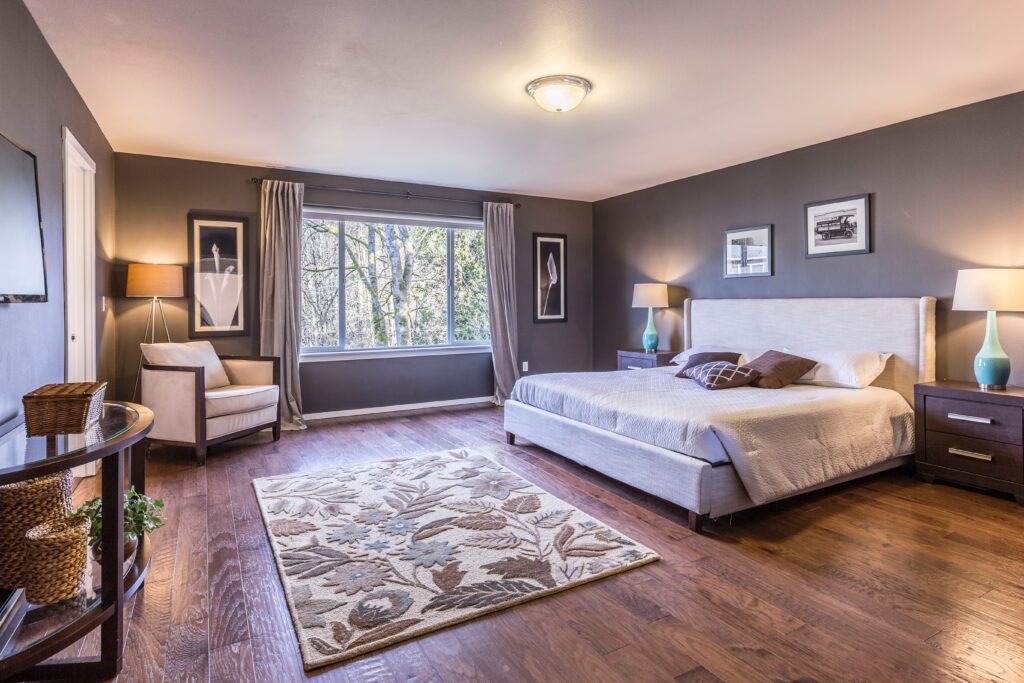Anxiety Treatment in Arizona
- CONDITIONS
Substance abuse and anxiety treatment in Arizona.

Terra Nova
Anxiety
Worry, restlessness, nervousness, the jitters—these are feelings that everyone gets from time to time. They’re normal survival responses to stressful situations. They only become problems when they are felt all the time or in non-stressful moments.
If someone is experiencing anxiety when there is no reason for it, or the anxiety far exceeds what is appropriate for the situation, they probably have an anxiety disorder. According to the Anxiety and Depression Association of America, anxiety disorders are the most common mental health disorder in the US. Over 40 million Americans currently suffer from at least one type of anxiety disorder—if you feel you are part of this group and are looking for anxiety treatment in Arizona, consider reaching out to our team at Terra Nova.
Speak to One of Our Caring Advisors Now
Request a Confidential Callback
The Terra Nova Difference in treatment
Different Anxiety Disorders
Anxiety presents itself similarly to everyone suffering from it—feelings of fear, unease, and even panic are some of the most common symptoms. However, it may manifest for different reasons and in different situations.
Each disorder can require different treatments, so it’s important to talk to a health professional about how and when these feelings affect you.
Generalized Anxiety Disorder
Generalized anxiety disorder, or GAD, is the most common form of anxiety. It’s defined as showing symptoms most days for six months or more. Symptoms can include:
- Irritability
- Uncontrollable worry
- Indecisiveness
- Fatigue
- Sleeplessness
- Feeling wound up or on edge
- Tension headaches
This type of anxiety could be centered around specific things in life such as a job or interpersonal relationships, or it could just be a part of everyday life.
Panic Disorder
When those feelings of anxiety become overwhelming, turning into intense fear, then it might be a sign of a panic disorder. The symptom that differentiates a panic disorder from generalized anxiety is a panic attack. These often occur for seemingly no reason.
Panic attacks can be triggered by certain situations, but they can also be the result of built-up feelings of anxiety.
Symptoms of a panic attack are:
- Feelings of doom and despair
- Overwhelming emotions
- Accelerated or pounding heartbeats
- Shortness of breath.
Panic attacks can happen in any type of anxiety disorder, but the frequency which they occur may indicate a panic disorder.
Phobias
Fear of spiders, fear of heights, fear of closed spaces—these are examples of phobias. Phobias are intense fears, sometimes considered irrational, of specific things. It could be for a specific type of animal, object, or situation.
Seeing these things, being in those situations, or even thinking about them is enough to cause worry and fear. Often, exposure can lead to panic attacks. People with phobias will go out of their way to avoid their fear.
Social Anxiety
Being around strangers or any large group of people can cause anxiety. Many people get nervous in social situations, but social anxiety is a more extreme aversion. They might feel extremely embarrassed or judged by others.
Agoraphobia
Agoraphobia is seen as an extreme version of social anxiety. The fear of being in public can grow to a point where a person won’t leave their home. Specific fears of agoraphobia include fear of enclosed spaces (like being inside any public building), open spaces (like a park), or crowded spaces. Like GAD, the symptoms of agoraphobia generally last six months or more to be diagnosable.
Separation Anxiety
Typical for young children, separation anxiety is usually gone by the time they reach toddlerdom. When it extends into later childhood or an adult shows signs, it is then considered a disorder.
Separation anxiety is exactly what the name suggests. It’s an unhealthy attachment to another person to the point where anxious feelings set it when that person isn’t around. It can be associated with agoraphobia. In some cases, an individual with that phobia can leave their home, but only with a close friend or family member.
Comorbidities with Other Mental Health Disorders
Comorbidity might suggest something scary, but it doesn’t mean anything too morbid. When two or more illnesses are present at the same time, they are considered comorbid.
More often than not, mental health disorders coexist. This is especially true of anxiety disorders as one often stems from the other. Physical ailments can trigger anxiety disorders, due to possible uncertainties about the future or healthcare costs.
Anxiety & Depression
The most common comorbid disorder with anxiety is depression. The American Journal of Psychiatry reports 65% of people with social anxiety are also diagnosed with depression. Only a third of depression patients do not have some type of anxiety disorder.
Some symptoms of depression overlap with symptoms of anxiety: Restlessness, irritability, anxious feelings, and fatigue are some shared signs of each illness. While anxiety more often spawns from a traumatic experience, depression is more often an imbalance of neurotransmitters like dopamine and serotonin.
Social anxiety and depression seem to have an especially strong link. Some describe it as a cycle—fear of social interactions may lead to feelings of depression and reclusion; fear of judgment due to reclusiveness increases apprehension of social situations.

Comorbidity with Substance Use Disorder
Just like having depression or anxiety puts you at risk for the other disorder, the same is true for anxiety and substance use disorder. The effect of most substances is relaxing, making someone feel like their anxiety is lessened while taking that drug.
Half of people diagnosed with SUD have a comorbid mental health disorder. A study from the National Institutes of Health showed that generalized anxiety disorder and panic disorder have the strongest links to SUD. The ADAA suggests that having a panic disorder puts someone at the highest risk for relapse after they recover from addiction due to the fear of having a panic attack.
Alcohol Use Disorder
The most commonly abused substance for someone with an anxiety disorder is alcohol. Anyone who has heard alcohol called ‘liquid courage’ can probably understand why.
Alcohol temporarily releases dopamine and slows down certain parts of the brain that might be responsible for some anxious feelings. This is another example of the cyclic nature of substance use and anxiety. An alcoholic might drink to quell social anxiety but get anxious if they’re in a social setting where alcohol isn’t available.
Prescription Anxiety Medications
Anxiety disorders can effectively be treated with medications. Some of the most commonly prescribed drugs are called benzodiazepines, or benzos, which can be highly addictive. Common brand names familiar to most are Xanax and Valium.
Benzos are meant to be a short-term solution to anxiety. They increase levels of gamma-aminobutyric acid, or GABA, in the brain. GABA is the neurotransmitter that blocks the nerve signals that make you feel anxious. Low levels of GABA mean more anxiety.
When benzos are introduced to the system, those feelings of fear, irritability, and worry disappear. Doctors also frequently prescribe them for insomnia and panic disorders. People with severe anxiety can be drawn to the sedative effect of benzos which can then lead to addiction.
'Hangxiety' Symptoms
Alcohol and other drugs can make you feel good for a few hours. But those pleasant effects are usually followed by a hangover. You probably think of symptoms like nausea and headaches, but people often feel anxiety as well. Some call it ‘hangxiety.’
Alcohol causes the brain to release extra dopamine, the ‘pleasure’ neurotransmitter. Dopamine helps regulate mood. After the big release that happens from drinking, dopamine levels are quite low and anxiety follows.
One sign of alcoholism is drinking to avoid withdrawal symptoms. A hangover is a minor withdrawal, and the hangxiety is a symptom of that. Someone with anxiety might drink to avoid feeling anxious.
The Causes of Anxiety
We’ve already talked about the cyclic nature of anxiety disorders and other mental illnesses. It does need to start somewhere, though.
Trauma & Stress Build Up
Certain disorders, primarily panic disorder and phobias can be caused by even a single event or exposure. Your brain responded to a stressful event or trauma, so exposure to similar stimuli triggers an anxious response.
Exposure to a stressful environment for a long period of time can also cause an anxiety disorder. While the exposure may be temporary, the anxiety can still be severe enough to warrant treatment.
Hormones
Imbalance in neurotransmitters like dopamine and GABA are the main causes of anxiety disorders. However, some studies have found that the sex hormones estrogen and testosterone play a part.
Nearly 24% of women develop an anxiety disorder compared to 14% of men. A study from Harvard indicated that women with lower estrogen levels are more likely to develop a mood disorder, and even when estrogen levels are low, women are more likely to show symptoms of anxiety and stress.
The NIH suggests a link between oxytocin, the ‘love hormone’ which plays a part in regulating mood, and testosterone. They found that people diagnosed with Social Anxiety Disorder have low levels of these hormones.
Genetics
Like other ailments, anxiety disorders, and other mental illnesses can be inherited. Whether genetics are a true cause or just a risk factor is still being studied. However, the NIH conducted a twin study that suggests a strong correlation between all types of anxiety disorders and family.
Paying for Treatment
We Work With Most Major Insurance
Terra Nova Behavioral Health works with most major insurance carriers to help cover most of the costs associated with treatment at our program. Get a free insurance verification right now to find out your personal options for treatment.
Stories of Recovery
What Our Clients Say
"TNBH has been the best addiction treatment experience by far. After several attempts at other addiction centers with our loved one, this one has exceeded our expectations in every way. Everyone has been very loving and helpful and honest. They are always available to answer any questions. We have been very impressed with this program and would recommend it to anyone."
"The staff is great to work with and it is easy to see how much they care about providing quality treatment. Jake responds quickly when my staff and I need him and he has helped many of our patients detox and get back to our facility with zero issues."
"Everything about TNBH was fantastic! The staff were all amazing and really do care about the clients! This place changed my life forever! So much so that after going through treatment here it motivated me to get a job working in treatment to help others in recovery like they did for me!"
Don't Wait Any Longer.
CALL US TODAY
Treating Substance Abuse &Anxiety Disorders in Arizona
Just like substance use disorders, it’s not too early to get ahead of an anxiety disorder. Medications, even benzos, can work under proper medical supervision. Doctors recommend therapy or counseling in addition to medication for the most effective treatment. However, SUDs are also hereditary, so some medications may be risky.
Talk to your doctor if you exhibit any symptoms of an anxiety disorder. It can take a toll on your social life, job, and physical health if left untreated.
If substance abuse has entered the mix, rehabilitation needs to be the next step. Therapists at Terra Nova’s Arizona anxiety treatment center understand that substance use goes hand in hand with anxiety disorders. They both need to be addressed at the same time, and mental health can be treated long after recovery. Contact us today if you or a loved one is struggling with substance abuse.








